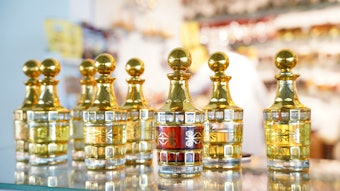
What’s in My Jar (WIMJ) helps consumers bring science to skin care with an interactive app. The company has tapped into experts in dermatology, AI and science communication to create a tool that consumers can use to look for products that deliver promised results.
Related: Headspace and ‘hum’ by Colgate Personalize Mindful Oral Care with App
As the company states on its website, this tool can help consumers look past the marketing jargon associated with products to buy skin care products that deliver the results they need. The WIMJ algorithm also evaluates the likelihood that a product will irritate skin. It does this based on the clinical and research data available and tells consumers if a product has a low, medium or high irritancy risk.
Calculating Ratings
According to the company, the WIMJ algorithm evaluates each product based on two criteria: effectiveness and irritancy potential. Effectiveness tells the consumer if a product can deliver its promises. WIMJ rates effectiveness on a 100-point scale, from 1 (lowest) to 100 (highest). The closer the effectiveness score of a product is to 100, the more effective the product is.
- Score between 80-100: This product can deliver on what it claims.
- Score between 35-79: The product delivers some of its claims but will not deliver in full.
- Score between 1-34: This product will not deliver on its product claims.
To evaluate effectiveness, the algorithm decodes the products’ marketing description into a claim of a tangible skin benefit. For example, it decodes the marketing speak of “quenching skin’s thirst” as a simple promise of moisturization. Some marketing claims such as “energizing skin” or “detoxing pores” are ignored because these types of claims are reportedly made up by a brand’s marketing department and the skin’s biology does not align with these claims.
For each product promise, the algorithm scans the product ingredient list in search of substances that can help fulfill this promise. If a product claims to hydrate the skin, the algorithm will look for moisturizing ingredients. Each ingredient is then also evaluated based on the scientific evidence available to support its efficacy. If a product contains an ingredient that has been shown to work in multiple human double-blind controlled studies, it will be rated higher than a product with an ingredient that has only been shown to have a positive impact in a lab on cells in a petri dish.
Previously: Henkel Personalizes Hair Color with Choicify AI Consult
In addition to assessing each ingredient against the product’s marketing promise, the algorithm evaluates the product formula as a whole. A good moisturizer, for example, reportedly needs to include a combination of actives with different functions, such as ingredients that bind water or help repair the skin barrier. The algorithm takes this into account, rating the products with better overall formulas as higher.
'My motivation for starting WIMJ is to make effective evidence-based skin care accessible to everyone.'
-Maria Semykoz, WIMJ co-founder and algorithm designer
Ingredient concentration in the product formula is another factor that the algorithm takes into account. To be effective, the product must include a certain amount of active ingredients. WIMJ flags ingredients in products that do not meet this effectiveness threshold.
Finally, the algorithm rates products that are formulated to minimize skin irritation risk as higher than potentially irritating products with the same benefits. The reason for this, according to WIMJ, is that even a low level of inflammation caused by irritants can worsen skin’s overall health and is bad for majority of skin concerns such as aging, blemishes, tone, texture, etc. According to the company, this is why products with relatively lower irritation potential are more likely to bring better skin results, even if the skin is not particularly sensitive.
Irritant Potential
The WIMJ algorithm also checks the data on skin irritation potential for ingredients in the product formula, considering the typical concentrations used. When collecting the data on irritancy potential, WIMJ relies on ingredients' safety assessments conducted by reputable bodies such as scientific committees of the European Union (the Scientific Committee on Consumer Safety, in particular) and the Cosmetic Ingredient Review in the U.S. In addition, the algorithm examines clinical data such as cases of dermal irritation, which are reported in dermatology publications.
The rating goes:
- Irritancy low (green): This product is unlikely to irritate skin and may work well for sensitive skin.
- Irritancy medium (orange): This product may be irritating, especially for sensitive skin consumers.
- Irritancy high (red): This product is likely to irritate the skin.
If WIMJ algorithm flags a product with a medium or high skin irritation risk, it does not mean the product will certainly cause a problem. Rather, it suggests the chance of irritation is higher for the given product. A product with low irritation risk can still cause a reaction, especially if a consumer has a rare sensitivity or has developed an allergy to a particular ingredient. As recommended, it is always best to patch test new products before using them.
“It took me over 16 years of trial and error to get to my good skin days," said Maria Semykoz, co-founder and algorithm designer. "Teenage acne, hormonal breakouts, irritant reactions, dry skin—I had it all. ... Reading medical journals, dermatology blogs and building spreadsheets with skin care ingredients helped my skin. It also cost me a lot of time and money. My motivation for starting WIMJ is to make effective evidence-based skin care accessible to everyone. Everyone deserves to feel confident in their skin.”
Featured: Designing Mild Personal Care Products: A Case Study










